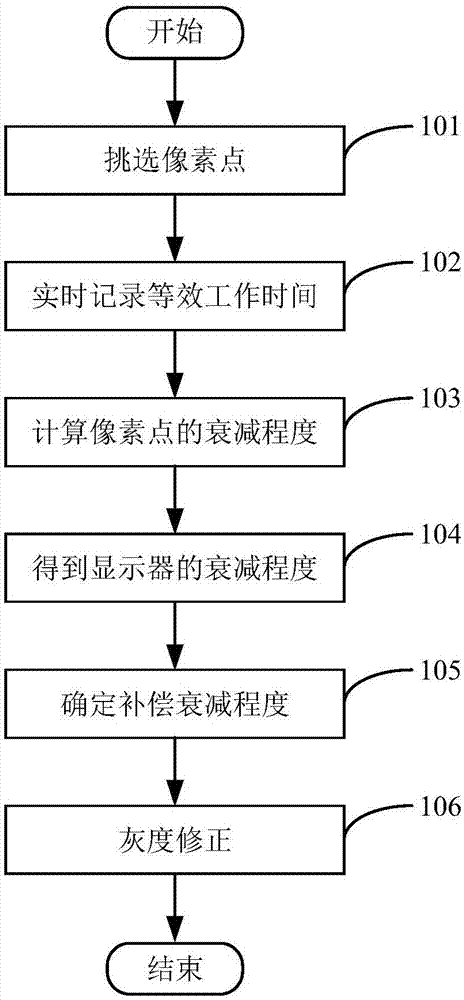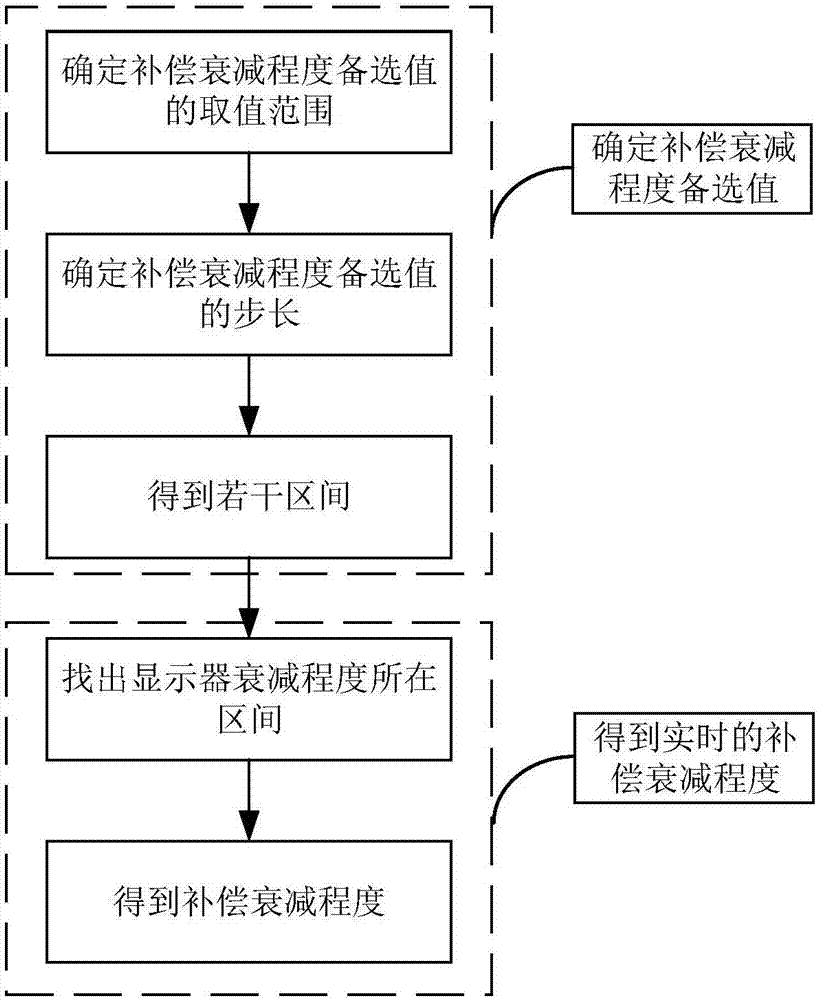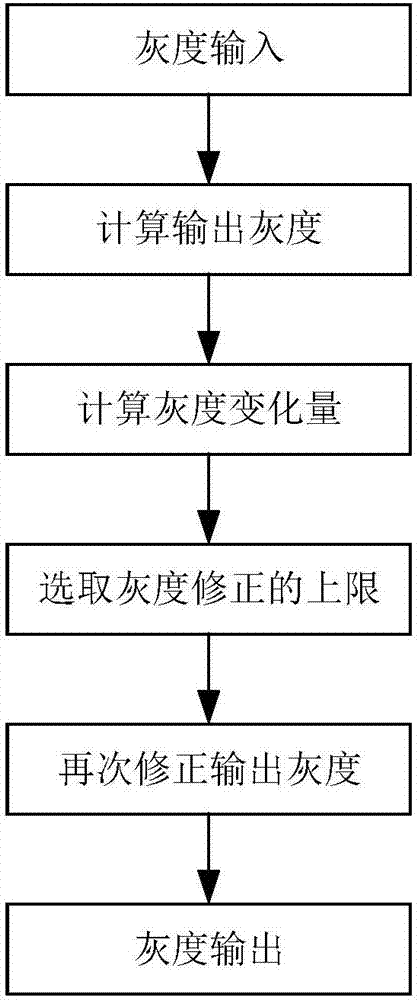Method for improving non-uniform display of OLED
A phenomenon, uniform technology, applied in the field of OLED image display, to achieve the effect of improving the unevenness of OLED display, improving the unevenness of display, and ensuring the effect of layering
- Summary
- Abstract
- Description
- Claims
- Application Information
AI Technical Summary
Problems solved by technology
Method used
Image
Examples
Embodiment 1
[0074] Taking an OLED display with a maximum gray scale of 256 and a resolution of 640×480 as an example, the specific steps of the method for improving the display unevenness are as follows:
[0075] Step 101, selecting pixels. First, the full screen area is divided into 160×120 regions, that is, the size of each region is 4×4, and the pixel at the center of each region is used as the selected pixel, then a total of 160×120 pixels are selected, which is called These pixels are typical pixels.
[0076] Step 102, record the equivalent working time in real time. The selected standard brightness is the initial brightness of the monitor displaying 128 gray scales. For a certain pixel point in the typical pixel point, use formula 1 to calculate the equivalent working time of one frame corresponding to the pixel point within the current frame time, and then compare it with the The equivalent working time of pixels is superimposed to obtain a new equivalent working time.
[0077] ...
Embodiment 2
[0082] Taking an OLED display with a maximum gray scale of 512 and a resolution of 1920×1080 as an example, the specific steps for improving the display unevenness are as follows:
[0083] Step 101, selecting pixels. First, the full screen area is divided into 240×135 regions, that is, the size of each region is 8×8, and the pixels in the upper left corner of each region are used as the selected pixels, and a total of 240×135 pixels are selected, which is called These pixels are typical pixels.
[0084] Step 102, record the equivalent working time in real time. The standard brightness taken is the initial brightness of 384 gray levels displayed on the display. For a certain pixel point among the typical pixels, use formula 1 to calculate the equivalent working time of one frame corresponding to the pixel point within the current frame time, and then calculate with the The equivalent working time of pixels is superimposed to obtain a new equivalent working time.
[0085] Ste...
Embodiment 3
[0090] Taking an OLED display with a maximum grayscale of 1024 and a resolution of 7680×4320 as an example, the specific steps for improving the display unevenness are as follows:
[0091] Step 101, selecting pixels. First, the full screen area is divided into 240×180 regions, that is, the size of each region is 32×24, and the pixels in the lower right corner of each region are used as the selected pixels, and a total of 240×180 pixels are selected, which is called These pixels are typical pixels.
[0092] Step 102, record the equivalent working time in real time. The selected standard brightness is the initial brightness of the monitor displaying 1024 gray levels. For a certain pixel point among the typical pixels, use formula 1 to calculate the equivalent working time of one frame corresponding to the pixel point within the current frame time, and then calculate the The equivalent working time of pixels is superimposed to obtain a new equivalent working time.
[0093] Ste...
PUM
 Login to View More
Login to View More Abstract
Description
Claims
Application Information
 Login to View More
Login to View More - R&D
- Intellectual Property
- Life Sciences
- Materials
- Tech Scout
- Unparalleled Data Quality
- Higher Quality Content
- 60% Fewer Hallucinations
Browse by: Latest US Patents, China's latest patents, Technical Efficacy Thesaurus, Application Domain, Technology Topic, Popular Technical Reports.
© 2025 PatSnap. All rights reserved.Legal|Privacy policy|Modern Slavery Act Transparency Statement|Sitemap|About US| Contact US: help@patsnap.com



